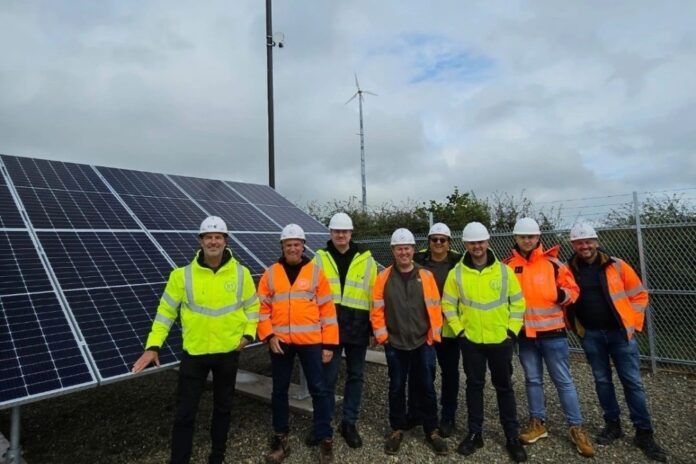The site, in the Shropshire Hills, supports 4G and 5G services and will be 70% powered by wind and sun – a prototype for more to follow
BT Group has switched on its first partly self-powered mobile site which is in the Shropshire Hills. It is expected that about 70% of the energy it needs will be generated by the on-site solar panels and wind turbine. This green energy charges the batteries which power the equipment on the mast.
When there is insufficient renewable energy and the batteries are flat, the site will switch to a generator that runs on hydrotreated vegetable Oil (HVO) for back-up power to the mast and to charge to the batteries. HVO is itself classed as a green fuel as it is produced from various waste and residual oils.
BT Group expects the site to deliver about 17,000kWh of wind and solar energy per year, the equivalent of 100,000 hot showers. It will also save the operator more than £10,000 annually.
The Shropshire Hills site is trial, but BT Group has already identified hundreds more locations that could derive much of their power from on-site renewable sources, in particular in coastal or hilly locations.
BT wants to be a net zero business by 2031, in large part by improving the energy efficiency of its networks which account for around 89% of its total energy consumption.
Experimentation with the self-powering site follows the roll-out of energy-saving cell-sleep technology across its RAN estate earlier this year, as well as shutting down its 3G network.
Greg McCall, Chief Networks Officer, BT Group, said, “Delivering ubiquitous coverage is critically important in an age where connectivity has never been so central to everyday life, but it absolutely must be done in a responsible and sustainable manner.
“It’s paramount that we increase the energy-efficiency of our networks, and so we’re really excited about the potential of self-powering sites in enabling us to meet both our sustainability and connectivity ambitions.”



